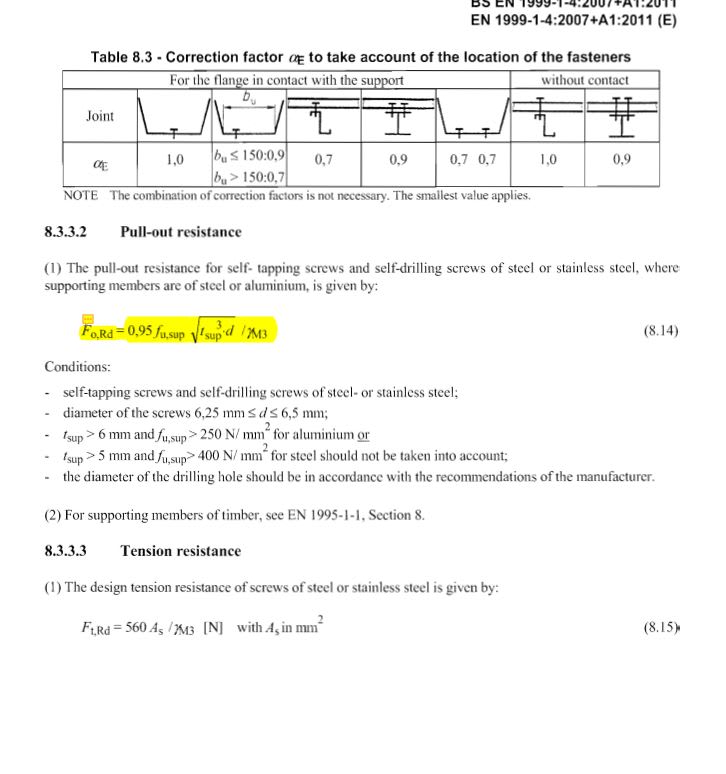Robert_spider
Structural
- Apr 7, 2023
- 28
I have some screws going inside an aluminium sheet of 3mm
Though the screw are four in square pattern (2+2)
They are connecting a bracket of cctv.
The weight is 5kg only
I just want to calculate the the pullout force
The maximum pull out force at which the screw will get pullout from sheet
The screw is 5mm dia and 40 mm long.
One correction they are M5 screw with nut at the back.
Is there a particular formula by which I can calculate the maximum force for pull out of a single screw
Though the screw are four in square pattern (2+2)
They are connecting a bracket of cctv.
The weight is 5kg only
I just want to calculate the the pullout force
The maximum pull out force at which the screw will get pullout from sheet
The screw is 5mm dia and 40 mm long.
One correction they are M5 screw with nut at the back.
Is there a particular formula by which I can calculate the maximum force for pull out of a single screw

